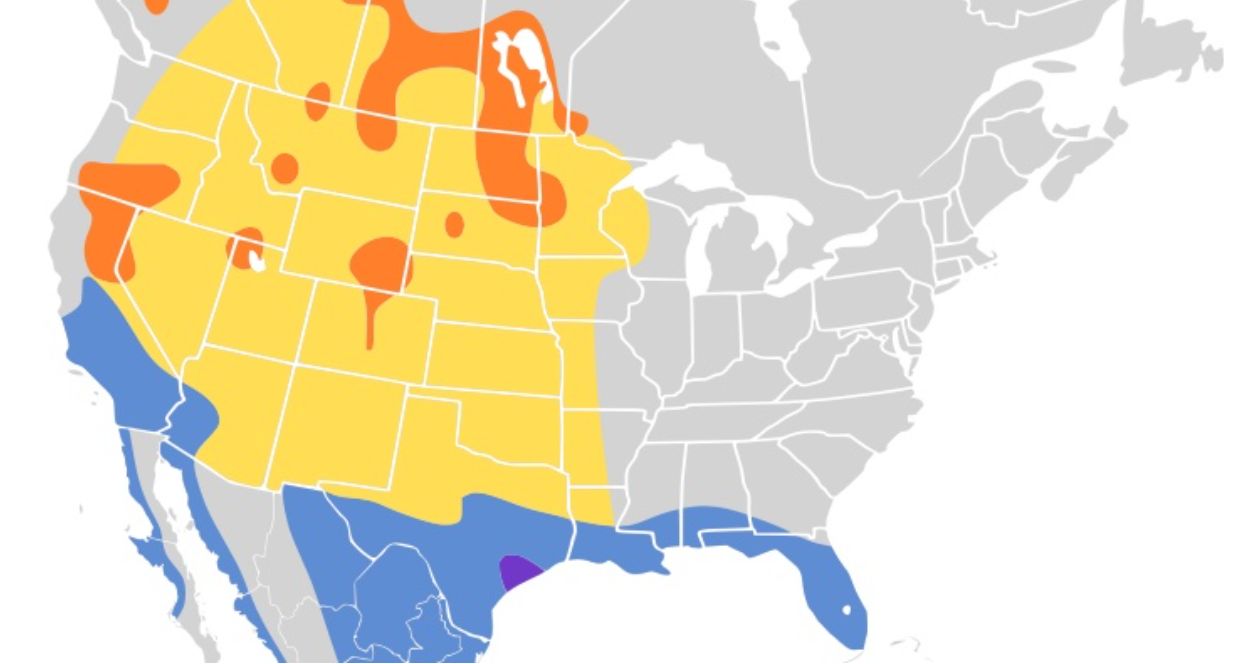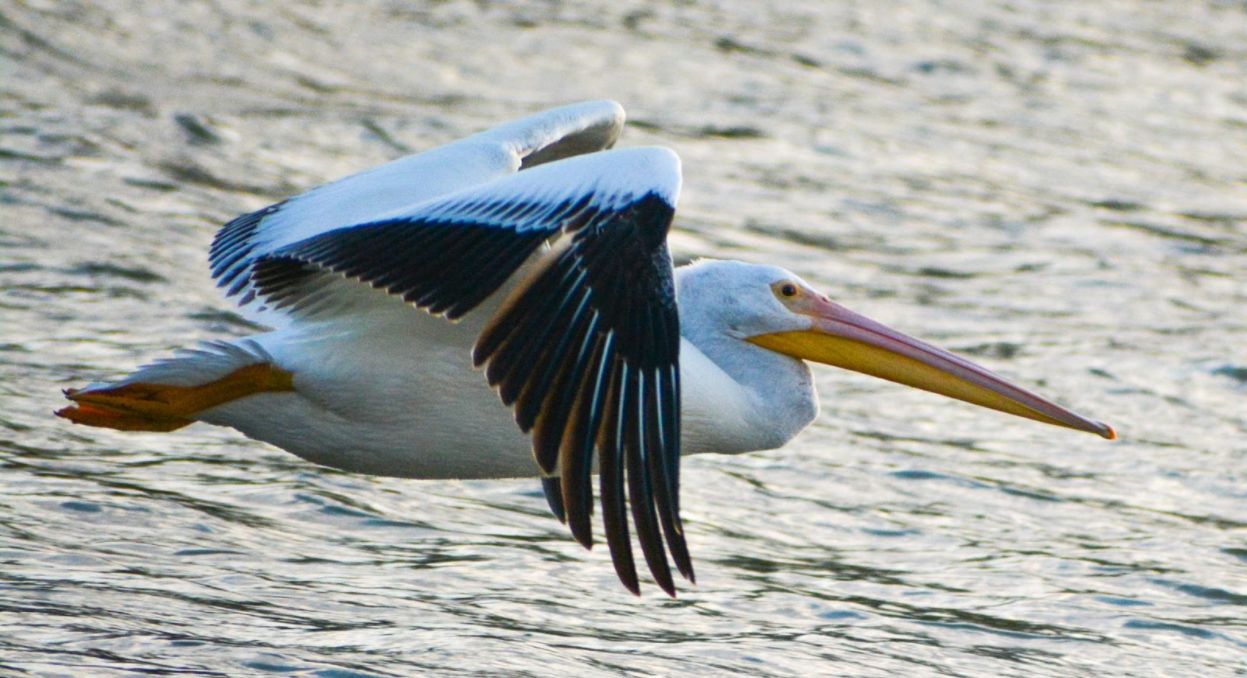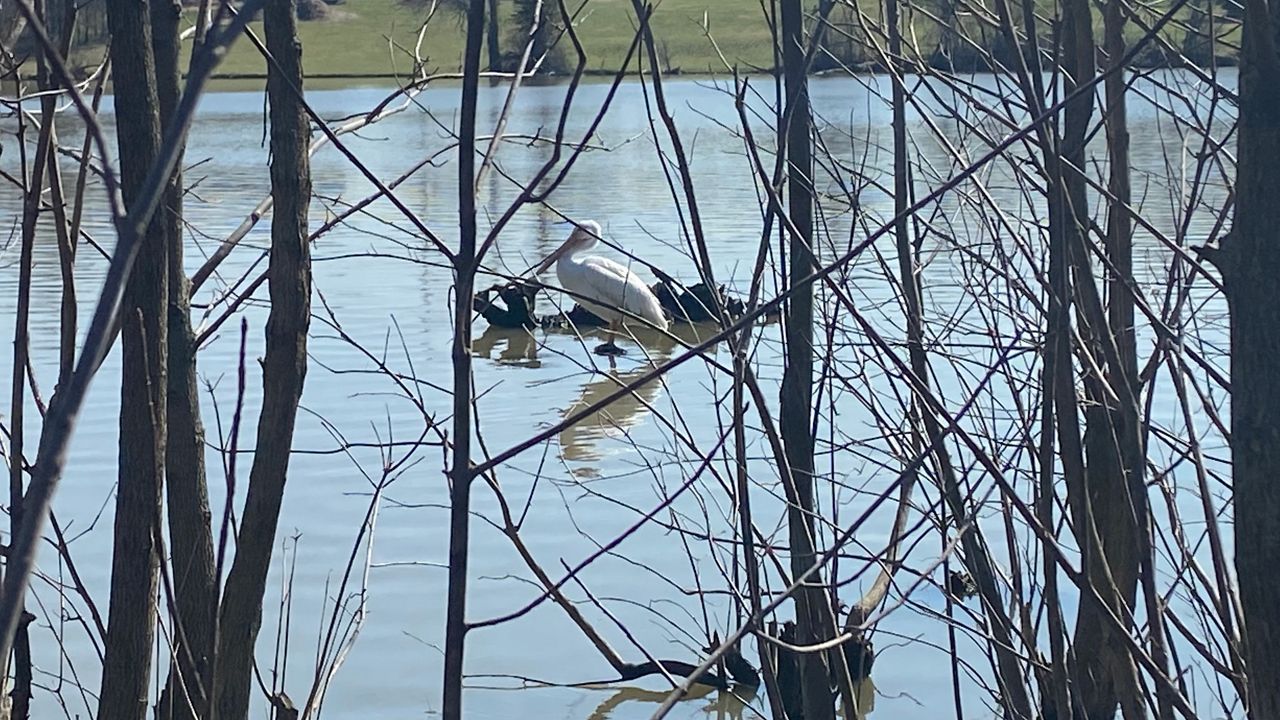LEXINGTON, Ky. — There is a new celebrity in Lexington.
What You Need To Know
- Bird has become local celebrity
- Few have been know to visit or stay in Central Kentucky
- Injury likely kept it from migrating south
- American white pelicans prefer warmth and are not typically solitary
While it is not uncommon to see a variety of birds at Jacobson Park on Richmond Road, one particular bird has made the park its home and is getting a lot of attention.
An American white pelican nicknamed “Pelly” was first spotted at the park by photographers in October 2021, and as of March 11, people can still see him or her swimming, flying or standing around the many bodies of water in the park.
“They are more of a Western species,” said John Brunjes, migratory bird program coordinator for the Kentucky Department of Fish and Wildlife Resources. “If you were in Lake Barkley or somewhere like that, they're a pretty regular-occurring bird. In this part of Central Kentucky, they do come through, but not nearly as often as you would have them out in the western part of the state."
Brunjes said there are a couple of pelican sightings every spring and fall, with the largest amounts occurring in October and November. Apparently, that's when Pelly arrived and set up camp.
The bird has gained a lot of attention because American white pelicans typically stay in flocks, and Pelly has remained the only one of his species at the park, often congregating with the many double-crested cormorants.
“I went this morning and watched him playing with the cormorants, actually mimicking them,” said David Kravetz, area photographer. “He can be hilarious trying to fit in.”
According to Bird Watcher's Digest, American white pelicans were a rare transient through Kentucky in historical times, but over the past 20 years in the Commonwealth they have been seen more regularly and in larger numbers.
While how Pelly wound up at Jacobson Park remains a mystery, the more common theory is that an injury to its right wing during migration likely knocked it off course. The pelican seems to have recovered, but remains a fixture at the park.
Kathy Lindsey, of Paris, was carrying a tripod and a camera with a high-powered lens along the water’s edge at the park. She said she is new to the hobby of photographing birds, and Pelly has confounded her interest.
“I don't think he's ready to migrate back north yet — there's no reason for him to leave,” she said. “I'm no bird expert, but I would think if he's going to move, it's going to be when the migration starts.”

Lindsey said she recalls Pelly seeming injured when he arrived at the park, but said she now observes him fly with ease to different spots on the lake and to other bodies of water in the park. She admitted those flights are easier and much shorter than a migration pattern.
“The speculation is he stayed because he was injured and couldn’t finish the migration south,” Brunjes said. “The pictures I've seen, I don't see the injury, but there are folks that believe he has an injured wing and that's why he's still here. The park is a place where we dump a lot of fish, so he may have just found a smorgasbord of fish that grew up in a hatchery. I'm not entirely sure what the answer is, but my suspicion is he probably is injured, because they don't like to hang out outside their species and they're not really solitary birds. I think he would want to be with other pelicans.”
Pelly is easy to spot in the park. Whether standing near the water's edge or wading in the water searching for food, the bird is far bigger than the others. American white pelicans have an overall length of 4-to-6 feet, wingspans up to 9 feet and a large, orange bill.
American white pelicans’ diets consist mainly of fish, but they will eat “pretty much anything they can get ahold of in the water,” Wiker said.
In the past few years, thousands of pelicans have been spotted at Lake Barkley in western Kentucky. They have made a pit stop there while migrating from the western Great Plains to the Gulf Coast. Pelicans have a specific migratory pattern that brings them through Kentucky, Brunjes said.
“We're on the edge of their migration route,” he said. “They nest in the mostly prairie Canada — Saskatchewan, Manitoba, Alberta — maybe even the Dakotas. Then they go south down to the Gulf Coast. The westernmost edge of most of the migration is along the Mississippi River. But birds have wings and they end up in weird places and we're close enough to that pathway that we regularly one here and there in Central Kentucky.”

Brunjes said on the rare occasions pelicans have made their way to Central Kentucky, they usually move on within a day or so, because cold weather typically is hard on pelicans.
“These birds are very susceptible to frostbite, which can create holes in their pouch,” he said. “The white pelicans seem to handle it a little better than the brown pelicans. Their toes and the webbing of their feet are really subject to frostbite as well. It doesn't seem to have affected this bird, and he's stayed through the winter. He could leave at any time, assuming he can fly.”
White pelicans scoop their food out of the water, they don’t dive. As a result, Brunjes said it’s unclear whether Pelly will become a permanent resident of Lexington. But for now, he’s enjoying the more than 3,000 trout that were recently stocked in the lake.
“The concern I would have is they're stocking that lake with trout when the water temperatures are cold,” Brunjes said. “As it gets warmer, there may not be enough food there to feed him, and he may degrade enough at that point where he can be taken to a rehabber and see if somebody can figure out what's wrong. He may have just decided he likes that he stumbled into a lake where they keep putting thousands of these little trout in there that are tasty and dumb. The fish that everybody likes to catch, he likes to catch as well, so we shall see. That bird taking up residence there is definitely an unusual occurrence.”
Pelly can be seen at all hours of the day at Jacobson Park. His journey is also being well-documented in a Lexington Parks Facebook group.



